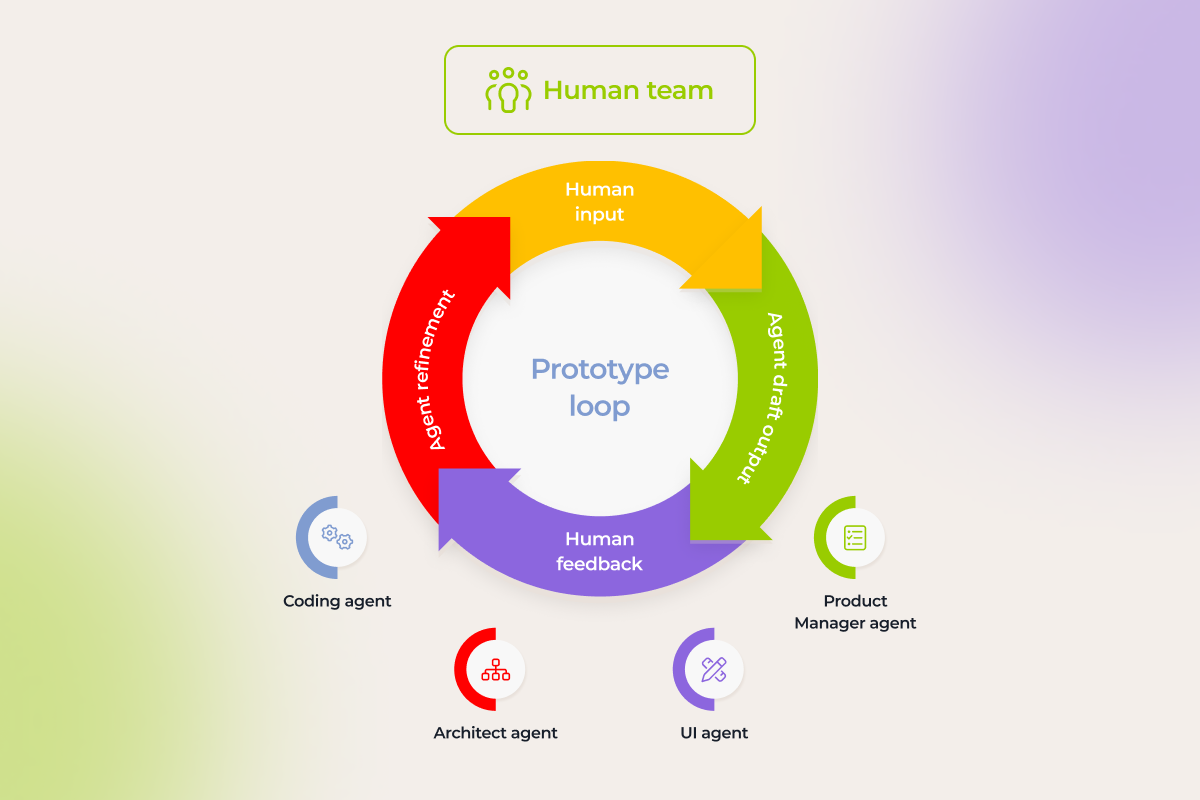Choosing the Right Software Partner in 2026: Trends You Should Know

Summary
Picking the right software partner in 2026 is crucial, as a misstep can slow your progress and eat into both time and resources. In essence, success comes down to finding a team that’s disciplined, AI-savvy, and aligned with your goals.
There’s no shortage of software development vendors. Everyone claims to be “full-cycle” or “end-to-end,” but very few can actually sustain enterprise-grade collaboration.
Given that in 2025 (and likely for years ahead), budgets are tighter, ROI is expected faster, and the window for experimentation has shrunk, a wrong choice of a partner comes at a higher price than wasted money. The time lost in achieving certain business goals is irrecoverable.
So, how do you find the right co-architect of your business resilience and competitiveness? Look for vendors who demonstrate the following traits, shaped by today’s business climate and technology shifts.
6 Essential Criteria for Choosing Your 2026 Tech Partner
1. More rapid, agentic-powered delivery under clear guardrails
Even though the engineering world is still in the early days of watching, learning, and adapting to this new way of building software, the so-called vibe coding, one thing is clear: it’s here to stay. In fact, agentic engineering, the real force behind the label, has been something *instinctools has been exploring since early 2024.
If your engineering needs sit somewhere between quick prototypes or MVPs, legacy system modernization, or faster delivery of custom digital products, pay close attention to vendors offering these services. But only after ensuring their multi-agent setup is orchestrated by senior engineers and comes with all the essential guardrails for security, quality, and compliance.

2. Modern SDLC practices
Seek vendors that apply AI in its different forms across the entire software development lifecycle to build products faster and at lower costs.
To assess how deeply and responsibly AI is embedded in their development process, you can ask these questions:
-
How do you integrate AI tools throughout the development lifecycle?
-
Is there a defined list of approved tools you rely on?
-
Do your specialists receive specific training for ethical and efficient use?
-
How do you mitigate legal and compliance risks?
-
What tangible value will your experts deliver by using these tools?
As our observations show, thoughtful AI-driven SDLC practices allow for:
-
Coding that’s about 60% faster
-
Drafting user guides or high-level acceptance criteria in roughly half the time
-
QA teams reclaiming 30-40% of their capacity to focus on tricky edge cases

3. Proven, transparent delivery framework
Software projects aren’t just about writing code. Staying on top of changing business needs while actually hitting the results you want – that’s the road, and it’s no easy one.
A vendor who just waves a rate card and says, “We’ll code it all, don’t worry,” won’t cut it. You need a partner who helps map the realistic timelines, clear deliverables, costs, and potential risks upfront.
Without a solid, formalized delivery framework, timelines, budgets, and outcomes are anyone’s guess. Check only those vendors who have one. Besides, check what principles guide it, the number of stages leading to a fully functional solution, and what exactly comes at each stage.

4. Strong stance on security
When evaluating a potential software vendor, their approach to security can reveal a lot about their professionalism and reliability. Start by looking at their security infrastructure across all levels, from physical premises to network, application, and data security.
Next, check which security best practices they follow and what certifications they hold. A reliable vendor may possess certifications such as the ISO 27000 family and/or NIST 800 series, and demonstrate compliance with privacy regulations like GDPR and CCPA.
Finally, consider how the vendor safeguards sensitive information: your personal data, any project-related assets you provide, and the security of the final software solution itself.
5. Proven reputation
No matter how sparkling a vendor’s website looks or how inspiring their mission statement reads, the real story lives in the experience of those who’ve actually worked with them. Dig into client reviews on platforms like Techbehemoths, and don’t be shy about reaching out to former clients directly.
“A reliable tech partner doesn’t operate in the shadows. They’re upfront about their track record, relevant experience, and clear terms of collaboration. The best development companies also know exactly who they are and where they’re headed. If that’s missing, you might be dealing with a vendor on the verge of shutting down.”
— Chad West, Managing Director USA, *instinctools
Superficial portfolios are easy to craft. Proven, professional conduct is not. Checking a company’s reputation is the only way to separate marketing polish from actual reliability, and by the time you circle back for referrals, you’ll have sharper, more informed questions that make the difference between a good deal and a headache waiting to happen.

6. Strategic location and access to deep talent pools
Location and talent‑pool considerations today are beyond cost. It’s no longer just “cheap country = good deal.” Rates alone don’t cover the hidden friction of time-zone gaps, language barriers, or cultural misalignment. The real value comes from being where talent is accessible, communication flows easily, and teams can engage in discovery and collaboration without constant hand-holding.
Summing up
There’s no foolproof formula for choosing the right software partner, but key factors like AI-powered skills, solid delivery framework, breadth of experience, information security, verified track record, and cultural fit may guide your choice.
Related Questions & Answers
How to choose a custom software development partner?
How much does it cost to hire a team of software developers?
Why hire a dedicated software development team?